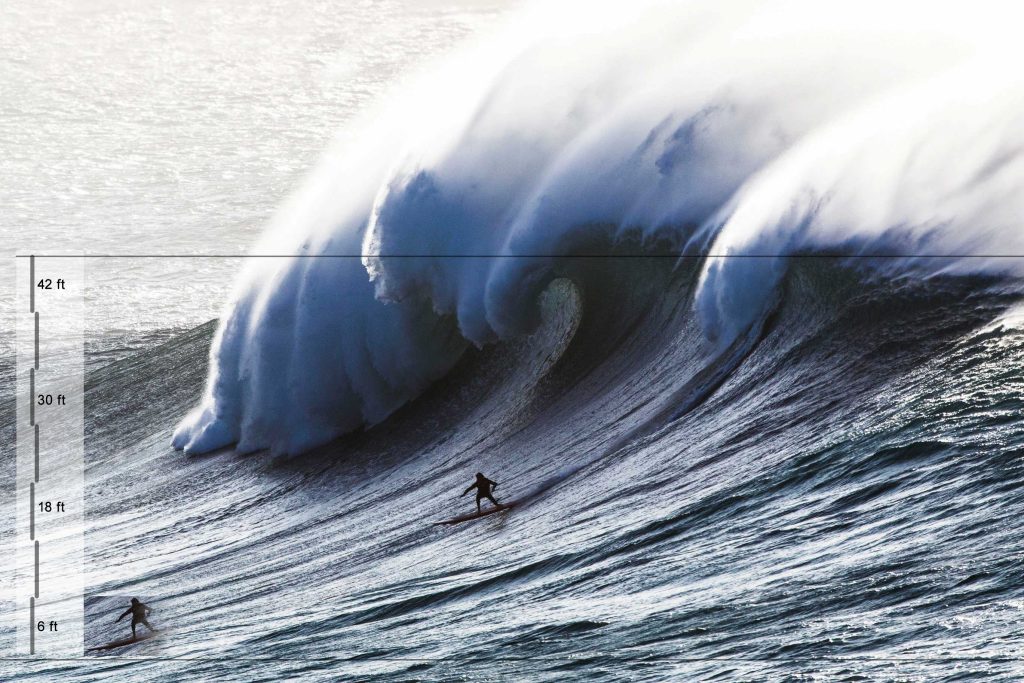With the recent amount of media coverage given to the swell of this past week here on the beaches of Sydney, especially the madness witnessed at Coogee Bay aka Wedding Cake Island, something really jumped out at me about what big wave surfers and perhaps surfers in general, actually fear the most.
And no when it comes to big waves – and no it’s the nightmarish wipeout of your life, its – the SIZE thing…
Apparently size or underestimating size really does matter.
Don’t really know where it started but the calling a wave for it’s actually height became a big swinging male appendage moment when perhaps as legend has it, the Hawaiians started calling a wave’s height based on the height of the back of the wave, and someone opened their big mouth and called a large wave a smaller wave.
Hmmm… me thinks this is a bit dumb and not to say confusing as depending on who you ask how big it is or was, you tend to get a range of answers. Most of them conflicting but one that stands out the most is this rule – “the bigger the charger, the smaller he claims it is/was” rule.
Not that this is applied at extreme levels, at least not anymore since the emergence of the XXL big wave competition. In this mega range when deciding how big the wave was, it is very much a “drop a tape measure over the ledge and let me know the height when it hits the bottom of the wave” approach.
So when I see comments from the likes of “it was 20 – perhaps 25 feet” when referring to the waves ridden at the aforementioned Wedding Cake Island by the young gun charger Max McGuigan, I say to myself – “something doesn’t sound right about that size calculation” Hmmm.
So lets take a look at the facts and see what we can make of it.

Max McGuigan, the lone paddle-in success story on the wave in question. Photo: Morris
Now that is a big wave, very much like something you would see at Nazaré but no this is Sydney, Coogee beach.
So I decided to get the real size scale into this supposed 25 footer.
See my image below with estimated 6 foot height scale to the left and see if this makes more sense to call it – dare I say it a 40 foot plus wave!
Shock horror how unmacho of me to suggest…

No that is not some guy dropping in on the bottom left ; ) just my estimated scale. Beg to differ if you will…
Now for all the calculations floating around the world wild webs about swell forecasting and using calculus to pinpoint with accuracy down to the nano level of where a swell is going to turn up and exactly when, you would have thought by now that someone just may have pointed out the elephant in the room.
That being the size and actual facts of big wave scales.
Ok so here’s my first grip with the “back of the wave” scale – no one actually surfs on the back of the wave, unless you count jet skis but ah no. So here we are surfing the front side of the wave face, makes sense to apply the scale there.
If not, then I guess Chopes never really gets over about 2 foot – right? Don’t think anyone reading this would agree with that.
So Why Are Surfers So Scared Of Calling It What It Actually Is?
My take on it is that it’s not very macho to call a wave it’s actual height because it makes you sound like a bigger charger than perhaps you really are, IF you underestimate it when retelling your big wave stories.
Granted some do add in the casual disclaimer at the end of their underestimating – “it was a solid 10 feet out there – and yeah they were 15 foot faces on ’em!” (still probably stretching/shrinking the truth – actually 18 – 20 foot faces if the above scale would be applied).
WIIS – What It IS Scale
What would the surfing world be like if we had just one realistic scale of wave height and everyone stuck by the code? Call it for what it is scale. WIIS for short.
Probably not going to happen, as there is just too much reputation at stake.
No one wants to sound like a pussy right? Well tell that to the judges with their XXL measuring sticks.
Surely a realistic wave height measurement can’t just be only applied to the life threatening stuff at Nazaré, Mavericks and Jaws etc?
With the surfing industry struggling to attract sponsorship money and a wider market appeal, wouldn’t it be advantageous to make it easier for the masses to understand our sport/lifestyle if there was a more realistic appraisal of medium big waves when it comes to sizing up the whole deal?
My point becomes a little clearer when someone who doesn’t surf gets shouted down for calling the waves bigger than they were.
ie; “Wow those waves look like 30 footers at least!” – non-surfing innocent bystander.
“Nah mate that was nothin’ over 15 feet, what are talkin’ about ya pussy!” – would-be/actual hellman charger et al.
